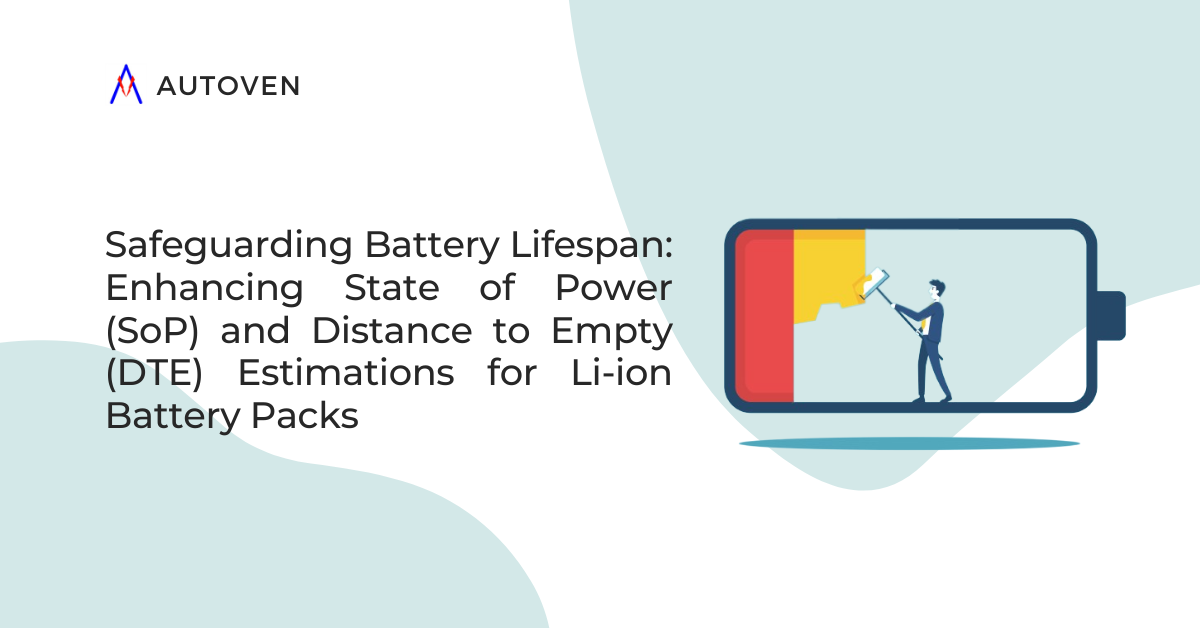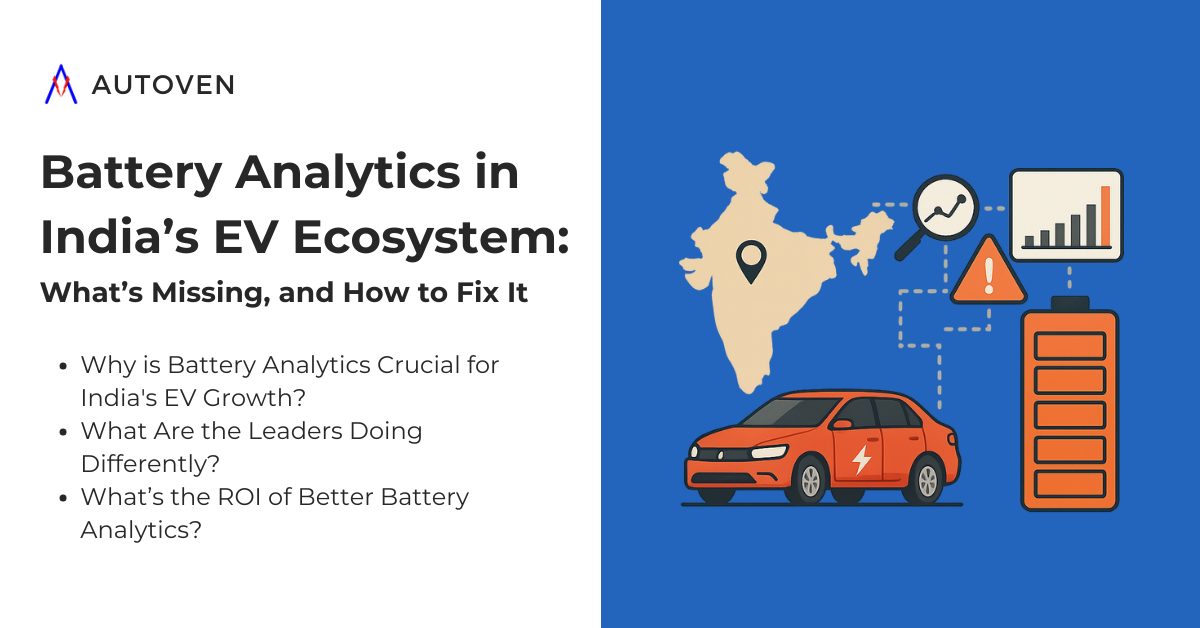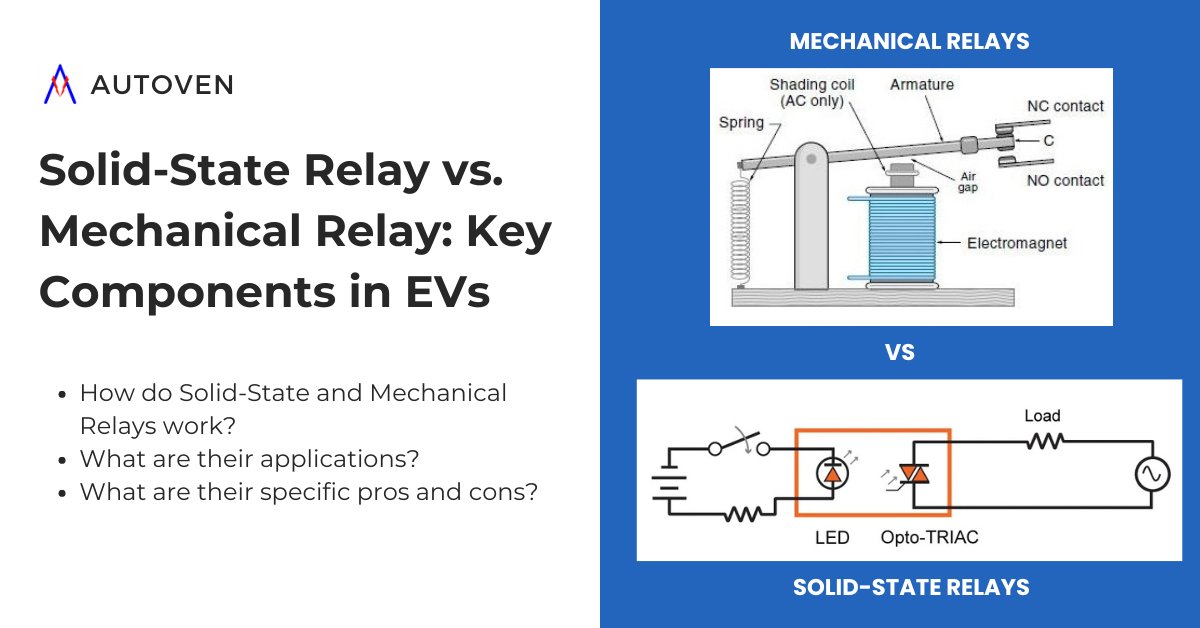Introduction
Over our series of blogs about “Introduction to Battery Management Systems,” we have tried to understand how battery management systems operate comprehensively. We discussed the various tasks a BMS undertakes, the important parameters it estimates, the estimation techniques used for accuracy, and methods to improve these estimations. We discovered how estimating State of Charge (SoC) accurately helps estimate other indicators, like SoH, SoP, and DTE. To achieve this, we saw how the EKF algorithm proves beneficial as it is adaptive enough to dynamic changes without affecting precision.
In our last blog, we delved into how one can maximize the battery lifespan by implementing strategies for accurate SoH estimation. We also discussed temperature management, optimal charging and discharging currents, and appropriate depth of discharge and recharge levels, which can significantly improve the SoH of Li-ion battery packs.
This blog will discuss State of Power (SoP) and Distance to Empty (DTE) estimations in depth. Accurately estimating the SoP and DTE is essential for optimizing the performance and lifespan of Li-ion battery packs in various applications, particularly in high-power batteries used in electric vehicles (EVs). SoP estimation ensures battery packs operate within safe limits, preventing an overload on the cells and potential damage. On the other hand, DTE estimation gives EV drivers an estimate of the remaining driving range, allowing for effective trip planning and avoiding battery depletion. Factors such as temperature, discharge rate, charging rate, state of charge (SoC), state of health (SoH), driving conditions, and power consumption are instrumental in accurately estimating both SoP and DTE.
SoP Estimation
Accurately estimating the Li-ion battery pack’s State of Power (SoP) is crucial for understanding its capability to deliver power. SoP refers to the maximum power a battery pack can safely deliver and accept without exceeding its limits. Failure to accurately estimate SoP can result in overloaded battery cells, leading to degraded performance and shortened lifespan.

For high-power batteries, such as those used in electric vehicles, SoP estimation is even more crucial. With a much higher power density than standard batteries, factors like SoC, temperature, discharge rate, and charging rate can significantly impact their performance and lifespan. Accurate SoP estimation ensures that batteries operate within their safe operating limits, reducing the likelihood of damage or failure and prolonging battery life.
Accurate SoP indicates the amount of power the battery can source for driving or sink from regenerative braking. This insight aids the motor controller in determining the battery’s load and power-bearing capacities. In turn, the motor controller informs the owner about the possible driving pattern that should be adopted, like the unavailability of Boost mode at lower SoP. Let’s say the battery is at 30% SoC, and thus, the deliverable power is 1KW out of the available 3KW. In this situation, driving up a slope, driving at high speeds, or driving with heavy baggage should be avoided, as these situations may demand higher power from the battery. The excess power delivery requirement may cause damage to the battery, reducing performance and lifespan. In this way, SoP estimation optimizes battery performance and ensures the safe and effective use of high-power batteries.
Improving SoP
Now, improving SoP estimations of Li-ion battery packs involves several key steps:
Accurate Modeling:
Developing accurate mathematical models that describe the behavior of the Li-ion battery cells in the pack is essential. These models should consider cell chemistry, internal resistance, parasitic RC networks, SoC, SoH, temperature, and aging effects. Accurate modeling of the battery cells helps predict their behavior under different operating conditions, which is critical for estimating SoP.
Real-Time Monitoring:
Real-time monitoring of battery parameters such as voltage, current, and temperature during battery operation is vital for accurate SoP estimation. Sophisticated battery management systems (BMS) that continuously measure and record battery parameters are essential to achieve this. Advanced sensor technologies can provide precise and reliable data for real-time monitoring, which can significantly improve SoP estimations.
Adaptive Algorithms:
Adaptive algorithms, such as the Extended Kalman Filter (EKF), can enhance SoP estimations for Li-ion battery packs. These algorithms continuously update the battery models based on real-time measurements, allowing for accurate estimation of SoP even when the battery behavior deviates from the expected model. They help to account for dynamic changes in battery performance and improve SoP estimations in real-world scenarios.
Overall, accurate SoP estimations are crucial for managing Li-ion battery packs and preventing them from being operated at stress levels. Improving SoP estimations involves accurate modeling, real-time monitoring, calibration and validation, and adaptive algorithms. Advancements in battery management systems and sensor technologies continue to enhance SoP estimations for Li-ion battery packs, enabling more efficient and reliable battery usage in various applications.
DTE Estimation
In the case of IC Engine vehicles, the metric that gives users information about the distance the vehicle can travel with a certain amount of fuel is known as its range. For EVs, the range can be defined as the distance the vehicle can travel at 100% SoC.
Distance to Empty (DTE) is an important parameter for electric vehicles (EVs) as it estimates the remaining driving range before the battery’s charge is fully depleted. Accurate DTE estimations are important for helping EV drivers plan their trips without worrying about battery range and avoid running out of power. To achieve this estimation, an analysis of the current state of the battery pack, including its SoC and SoH, and the current driving conditions, such as speed and temperature, is needed.
Let’s say a driver has a full battery and needs to travel 150 kilometers. The vehicle’s battery has a total capacity of 50 kWh, and the average power consumption of the vehicle is 20 kWh per 100 kilometers.
Using the DTE estimation, we can calculate the remaining battery capacity that the driver will have when they reach their destination:
Energy consumed during 150 km = 20 kWh/100 km * 150 km = 30 kWh
Remaining battery capacity = Total capacity – Energy consumed = 50 kWh – 30 kWh = 20 kWh

Based on this calculation, the drivers can estimate that they could travel up to 100 km before the battery charge has exhausted at the end of their trip. This information can help the driver plan their trip, make necessary charging stops, and avoid running out of battery power during the journey.
Improving DTE
Here are some measures that EV OEMs can take to improve DTE estimations for Li-ion battery packs:
Consideration of Environmental Factors:
Environmental factors such as temperature, humidity, and altitude can significantly impact the performance of Li-ion battery packs and, in turn, affect DTE estimations. Proper temperature management, including keeping the battery pack within the optimal temperature range (typically 20-30°C), can improve the accuracy of DTE estimations. Additionally, accounting for factors such as humidity and altitude, which can affect battery performance, can further enhance the accuracy of DTE estimations.
Battery Aging and Degradation Monitoring:
Monitoring the aging and degradation of Li-ion battery packs over time is crucial for accurate DTE estimations. Aging and degradation can impact the actual capacity and performance of the battery, affecting the estimated driving range. Regular battery health check-ups, including capacity testing and monitoring of battery State of Health (SoH), can provide valuable insights into the actual performance of the battery and help improve the accuracy of DTE estimations. Alternatively, continuously monitoring the battery through an IoT system, with data from the start of battery life, can provide insights into the current performance of the battery rather efficiently.
Usage Pattern and Driving Behavior Analysis:
Analysis of usage patterns and driving behavior can also help improve DTE estimations. Factors such as driving speed, acceleration, and regenerative braking can impact the actual energy consumption and, in turn, affect the estimated driving range. By analyzing usage patterns and driving behavior, EV OEMs should optimize algorithms to provide more accurate DTE estimations based on the specific usage patterns of the vehicle. We obtain range by calculating the Distance traveled by the vehicle between every % decrease in SoC (both instantaneous and moving average over some distance).
Overall, accurate DTE estimations are essential for helping EV drivers eliminate range anxiety and optimize the use of available battery capacity. Steps such as accurate measurement of battery parameters, real-time data, algorithm optimization, consideration of environmental factors, battery aging, degradation monitoring, and analysis of usage patterns and driving behavior can help improve the accuracy of DTE estimations for Li-ion battery packs. Proper maintenance, monitoring, and optimization of battery parameters and algorithms are crucial for reliable and accurate DTE estimations, ensuring electric vehicles’ efficient and reliable operation. Always refer to the vehicle manufacturer’s guidelines and recommendations for the optimal use of Li-ion battery packs and accurate DTE estimations.
Conclusion
Accurately estimating Lithium-ion battery packs’ State of Power (SoP) and Distance to Empty (DTE) is essential for optimizing their performance and lifespan. SoP estimation ensures battery packs operate within safe limits, preventing damage and degradation. DTE estimation provides drivers with valuable information about the remaining driving range, allowing for effective trip planning and avoiding battery depletion. To learn more about Battery Management Systems in detail, contact us, and we will be happy to engage in these conversations.
To stay updated on the latest blogs and news about Autoven, subscribe to Autoven Insights!



